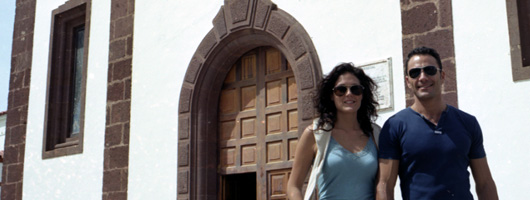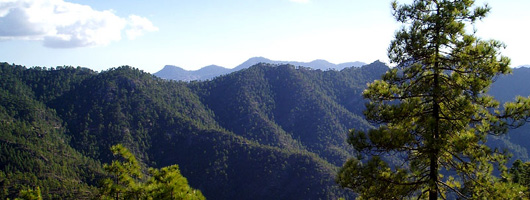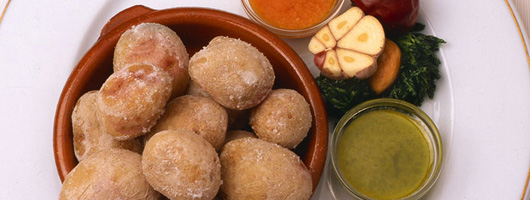Artenara is an ideal place to see archaeological sites that show the way of life of the native Canary Islanders. A visit to the municipality therefore includes a walk through el Complejo Arqueológico de Acusa, (Archaeological Complex), one of the most important archaeological sites of the area, which is made up of dwelling and funerary caves. You may also visit the caves at Cuevas deCaballero, a sheltering area for native shepherds and an important archaeological area where the caves offer us a unique symbology of the native Canary Islanders.

La Cueva de Los Candiles is another traditional place to visit. It is an enclave in la Montaña de Artenara and its importance lies in the wall decorations, where cave drawings can be seen.
A visit to the chapel Ermita de la Virgen de La Cuevita is also a must, as this chapel is dug into a cliff face 400 metres from the town centre. It dates from the eighteenth century and has all the necessary components for religious services - altar, pulpit, confessional and choir stall - all carved right into the rock. The only statue in this chapel is of la Virgen de La Cuevita, highly revered in the municipality and in the rest of the island.

La Iglesia de San Matías is the present-day Parish Church of Artenara. Its origins go back to the beginning of the seventeenth century, but, after several conflicts and negligence on the part of the authorities, the construction of the new church began in the second half of the nineteenth century. Highlights in this church include the statues of la Virgen del Rosario, la Virgen de la Concepción, San Matías and San Juan.
Also included in visits to religious and historical monuments, la Ermita de la Candelaria in Acusa deserves a mention. This was located in a cave in the seventeenth century until it was replaced by the current chapel in 1679. In 1960 the presa de la Candelariawas constructed staying the church under her waters, by what the current hermitage was constructed. It has a collection of statues of great value: la Virgen de la Candelaria, the statue of Santo Cristo Crucificado (Crucified Christ), recently restored, San Antonio de Padua, el Niño Jesús and San Blas.

The natural surroundings of Artenara are one of the main attractions of the municipality, which is integrated in the Tamadaba Natural Park, a woodland area with great botanical variety and of great scenic interest. The impressive Tamadaba Pine Forest is the natural area of greatest value in the municipality and of the island. It covers 8 square kilometres and has spectacular views. Visitors can enjoy the views on several walks and tracks from Artenara. Another of the more recommended visits is to the Roque Nublo Rural Park, from where there are spectacular views and where the rural environment can be appreciated in its most natural state.
Artenara is primarily a municipality of the interior. However, it borders in the west with a small coastal area where the only beach of the municipality can be found: Punta Gongora or Punta de Las Arenas.
This is a little-known beach of the island, which must be reached on foot as it does not have access for cars. It is a black sand beach in a windy area, which means it normally has large waves. Many visitors choose to do nudism at this beach.
In Artenara you can find a large number of craftspeople who carry out their activities in the municipality. Visitors can visit the workshops and buy objects of great traditional value, primarily elements of traditional ceramics and typical Canary Islands tablecloths made by hand.
In addition, the municipality has a craft centre and a pottery centre in the area of Lugarejo, where craftwork in clay is on display. The craftspeople work the clay as the early inhabitants of the island did, firing it in a traditional “guisadero” and not in an oven.
Because of its location in the peak area, Artenara is a municipality where tasty dishes of grilled meat can be tried, such as goat, marinaded rabbit and fried suckling pig. As a snack, you can try cheese from the local livestock (made with a mixture of goat, cow and sheep milk), papas arrugadas (wrinkled potatoes) with “mojo” sauce, ropa vieja, (chickpeas with meat and vegetables), blood sausage...

A classic from Artenara is potaje de berros (watercress stew).
The confectionary of the municipality is based on the traditional bienmesabe, made with ground almonds, truchas rellenas (filled pastries), marzipan, bollos de cuajada (quark cakes) and tortillas de calabaza (pumpkin pancakes).